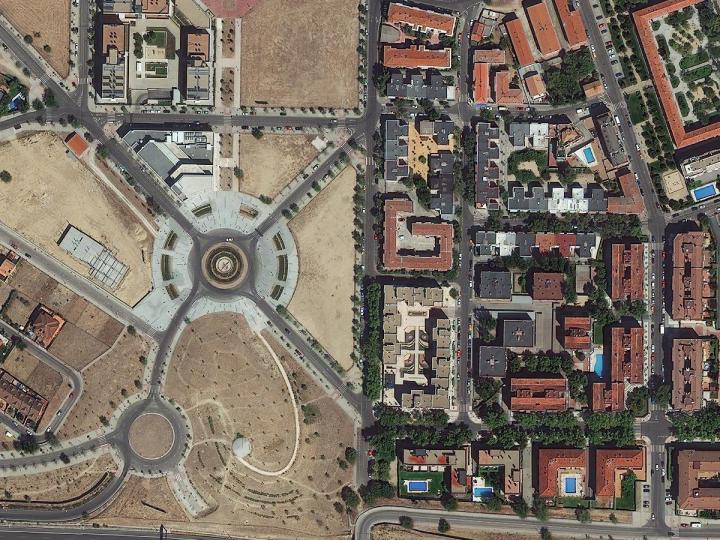
The image above, together with the other sample pictures shown off by DigitalGlobe, have actually been shrunk down to a 40cm level of detail — government restrictions prevent them from going any closer than that right now. When it gets the necessary clearance next year, WorldView-3 will be able to count chickens, tell the difference between an SUV and a sedan, and spot baseball diamonds from space.
Related: Google buying Skybox satellite firm to boost Maps and further Loon project
The satellite is also incredibly fast: It can capture an area the size of Texas every single day, so the super-sharp satellite imagery will be updated more quickly than ever before. You might want to think about tidying up your front yard if you don’t want the whole world to see it.
“We are delighted that even in the early stages of calibration and commissioning WorldView-3 is revealing new insights that will enable customers to address some of the most pressing global challenges,” said DigitalGlobe CEO Jeff Tarr as the pictures were published. “WorldView-3 performance is exceeding our expectations and is a great step forward in helping our customers make critical decisions with confidence as they save lives, resources and time.”
Those customers include shipping companies counting containers on a dock, aid agencies monitoring disaster zones, airport authorities checking plane positions and local governments getting updates on road surface wear. Oh, and all of us, spying on the family down the road.
The WorldView-3 is smart enough to filter out clouds and smoke and is also able to correct colors as it goes to produce a uniform map. It can even be trained using special algorithms to spot particular objects on the ground, from dying trees to football pitches. The 18-foot, 6,200-pound satellite will run for at least seven years and could be operational until 2026.

